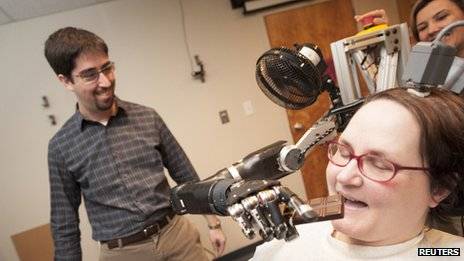ScienceRocks
Democrat all the way!
- Thread starter
- Banned
- #41
Tablet-controlled assembly line robots ready for the masses
Tablet-controlled assembly line robots ready for the masses | DVICE
Tablet-controlled assembly line robots ready for the masses | DVICE
We've heard about Foxconn's legion of robots scheduled to take over for the company's human work force, and we know that robots are already working in many factories in the U.S. But bringing this kind of automation to the masses by making it simple to use and affordable has been elusive, until now.
Danish company Universal Robots has unveiled the UR5 and UR10 robots that offer the promise of a lightweight, easy to set up, cost efficient robot for small companies. Paired with a touchscreen tablet controller, the user has the ability to program the robot to carry out complex functions that require speed and a delicate touch. And, if the user decides to have the mechanism work alongside humans, the robot has a safety function that instantly brings it to a halt when met with resistance or an obstacle not programmed into its functions.
Universal Robots founder and CTO Esben Ostergaard said, "We decided to make programming intuitive by developing a graphical user interface combined with a 'teaching function' allowing the user to simply grab the robot arm and show it how a movement should be performed. The robot can be integrated into any production process very quickly. Our experience shows this is generally done in a few hours."



